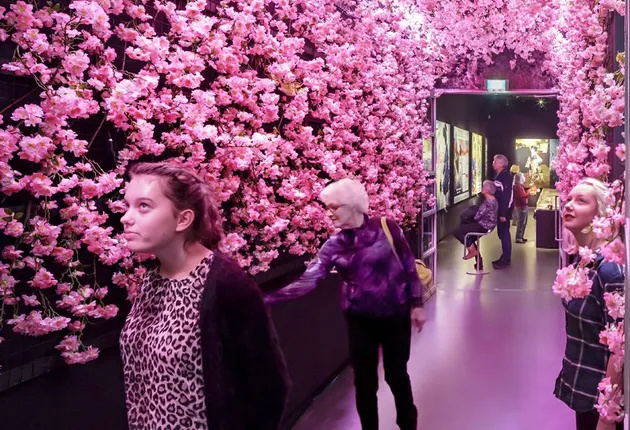STORY OF THE TOTEM POLE
Museum Volkenkunde
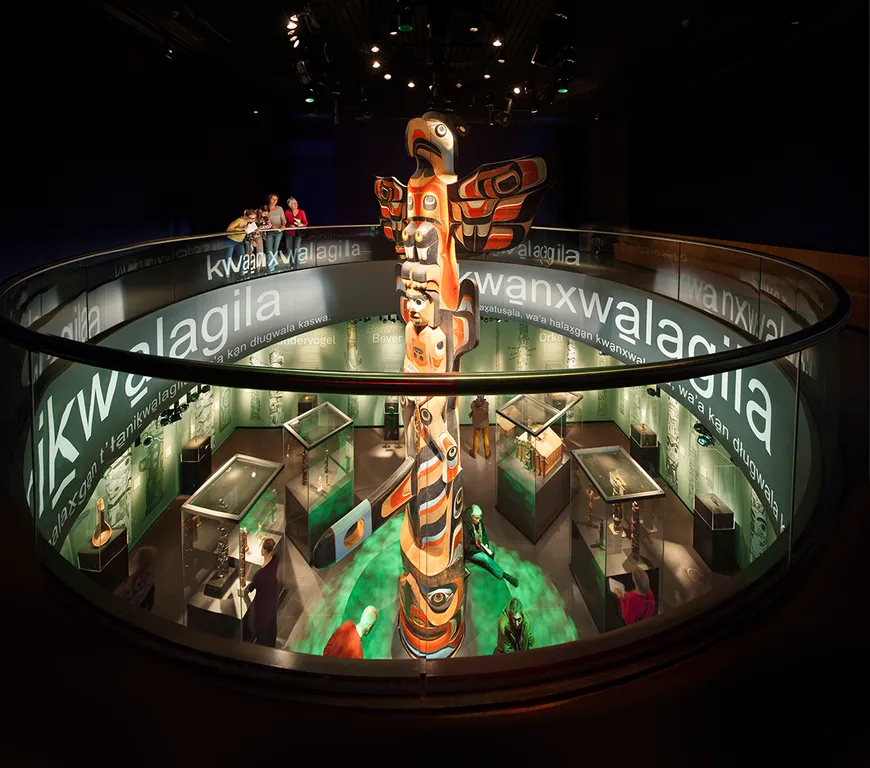
The Story of the Totem Pole is a family-oriented exhibition that focuses on the indigenous inhabitants of the Northwest coast of the United States and Canada. These First Nations have a rich tradition in woodcutting and are famous for their stunning totem poles. An eight-metre-tall tall totem pole was made especially for the exhibition by a group of artists led by Kwakwaka’wakw artist Rande Cook. In addition to this extraordinary totem pole artefacts from international collections as well as the collection of the Museum Volkenkunde Leiden are on display. By means of theatrical installations, stories, interviews and reportage visitors are given an impressive overview of the rich cultures of the First Nations.
- Location
- Leiden (NL)
- Client
- Museum Volkenkunde
- Year
- 2012
Three-part collage
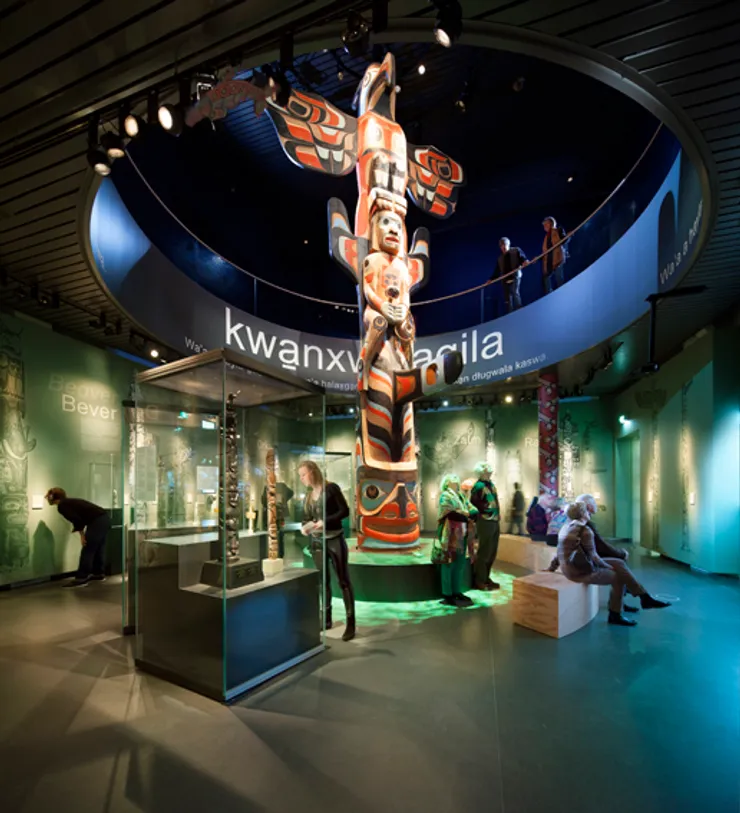
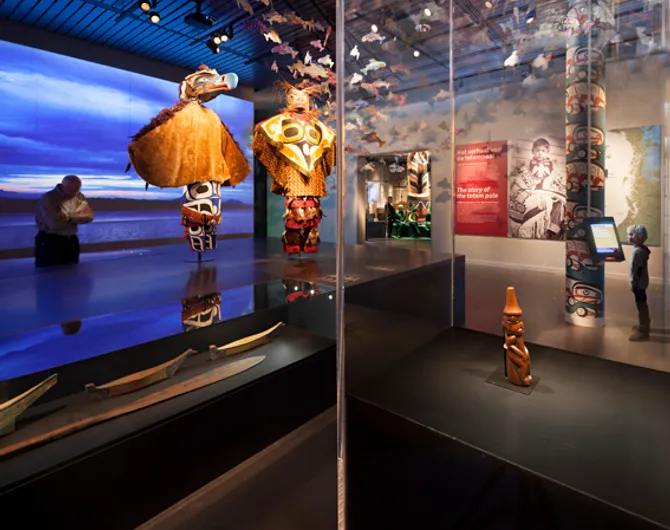
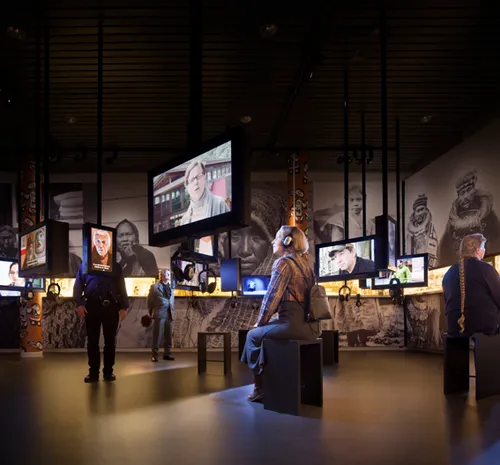
The First Nations’ close connection to nature is a recurring subject in their traditional woodcutting. A graphic wood of totem poles surrounds the totem pole that was made especially for the exhibition. These totem poles each tell a story. Through headphones you can listen to audio stories that tell in more detail about the meaning of the ‘crests’, the mythical creatures that play a key role in the First Nations’ visual vocabulary.
Land of plenty
The exhibition is spread over a series of thematic rooms that highlight various aspects of the lives of the First Nations. The start of the exhibition offers a glimpse of the world in which they live. The green and water-rich area of the Northwest coast of the United States and Canada is home to bears, wolves and a lot of salmon. Because so much food is available so easily, the First Nations were able to settle permanently in this region, while leaving them a lot of spare time for making art. The story of this life of plenty is told in the exhibition by way of film fragment and an installation of salmons. However, this life of plenty also appears to have a flipside. Four documentaries about the First Nations’ daily life engage critically with contemporary issues.
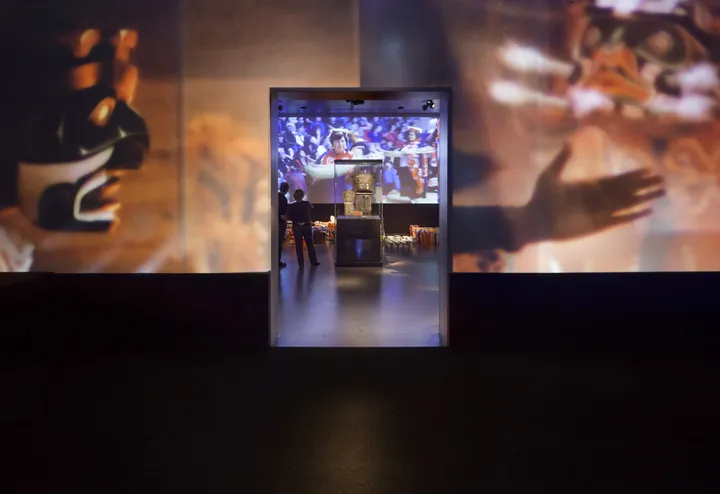
Connection with the present
This exhibition does not only have historical objects on display but offers also a connection with the present. One space is laid out like a contemporary art gallery that shows contemporary art made by First Nations. Attention is also paid to the ‘revival’ of Indian culture. This revival is put in a historical perspective through wall-size old portraits and a timeline of seminal events in the history of the First Nations. On the one hand the space offers an anthropological perspective on that history, while on the other hand giving visitors the opportunity for one-to-one encounters with contemporary First Nations through audio-visual installations.
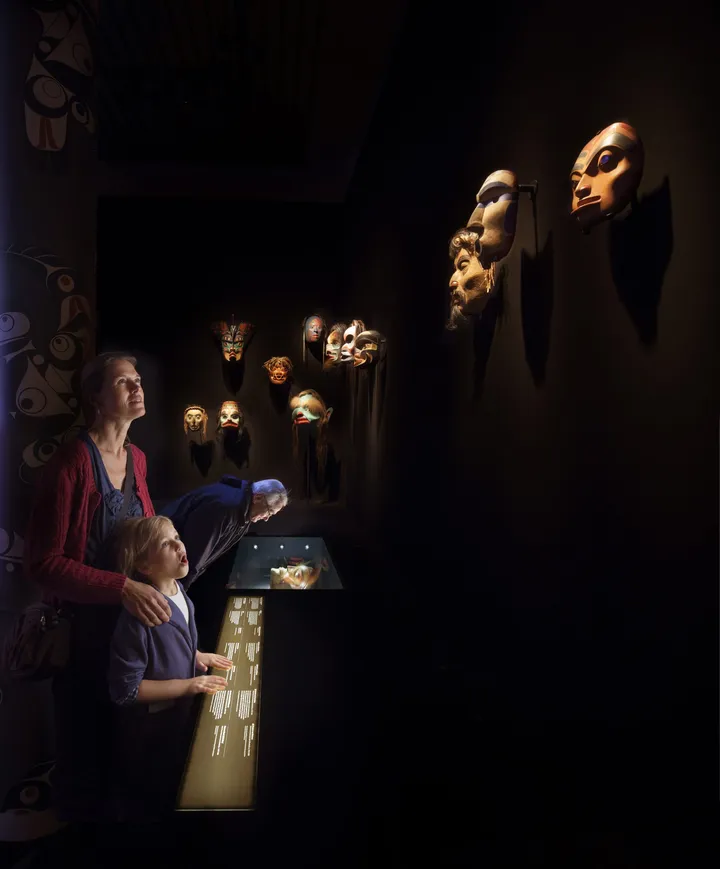
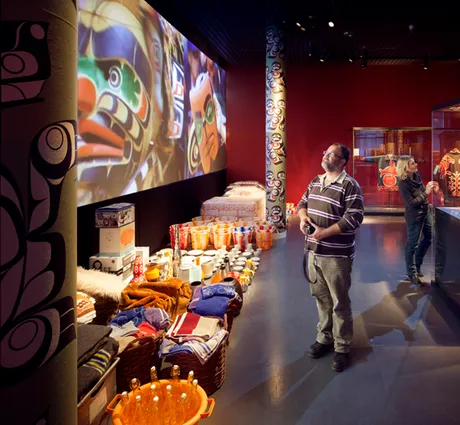
Ceremonies
Ceremonies are the central topic in the last three exhibition spaces. Via a room in which a special transformation mask is on display, you enter a dark room full of mythical masks used in various rituals. In the end attention is being paid to Potlatch: a big feast with rituals during which the host raises his status by giving away as many presents as possible. Sound is a key element in this space, immersing you in the hubbub of a real Potlatch. By way of a panoramic film projection and a display of old and contemporary Potlatch gifts visitors become part of the feast.
An education element aimed at younger visitors is embedded in the entire exhibition. They can answer questions about the show via interactive screens try and gather as many ‘crests’ as possible.
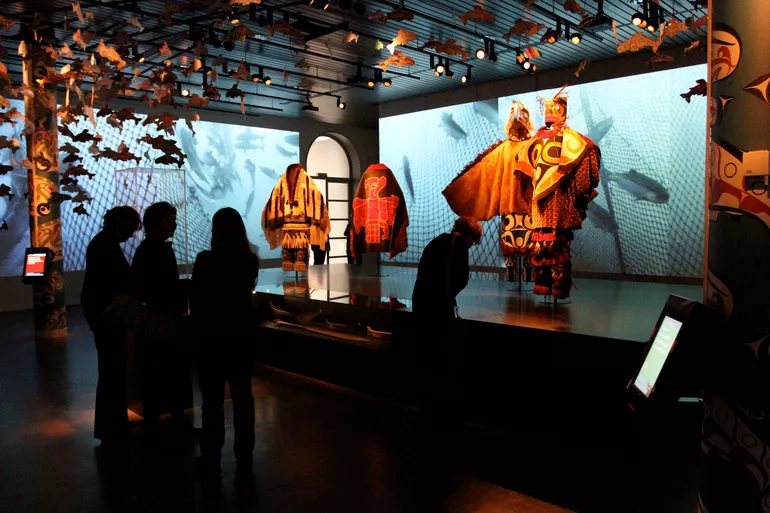
Awards
SBID International Design Excellence Awards 2013
- Public Space, winner

